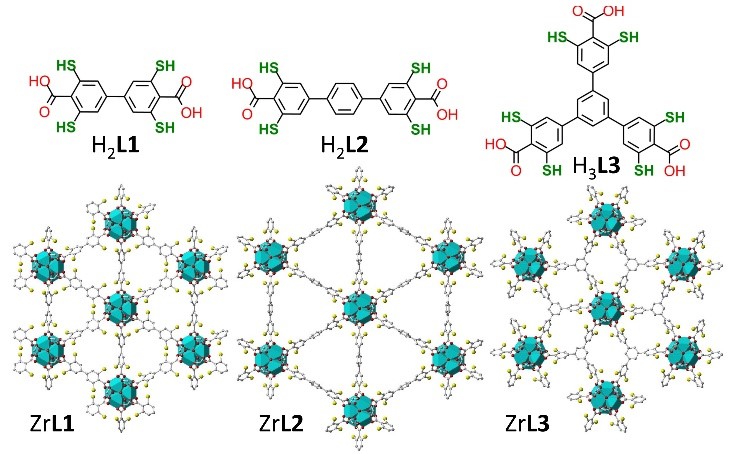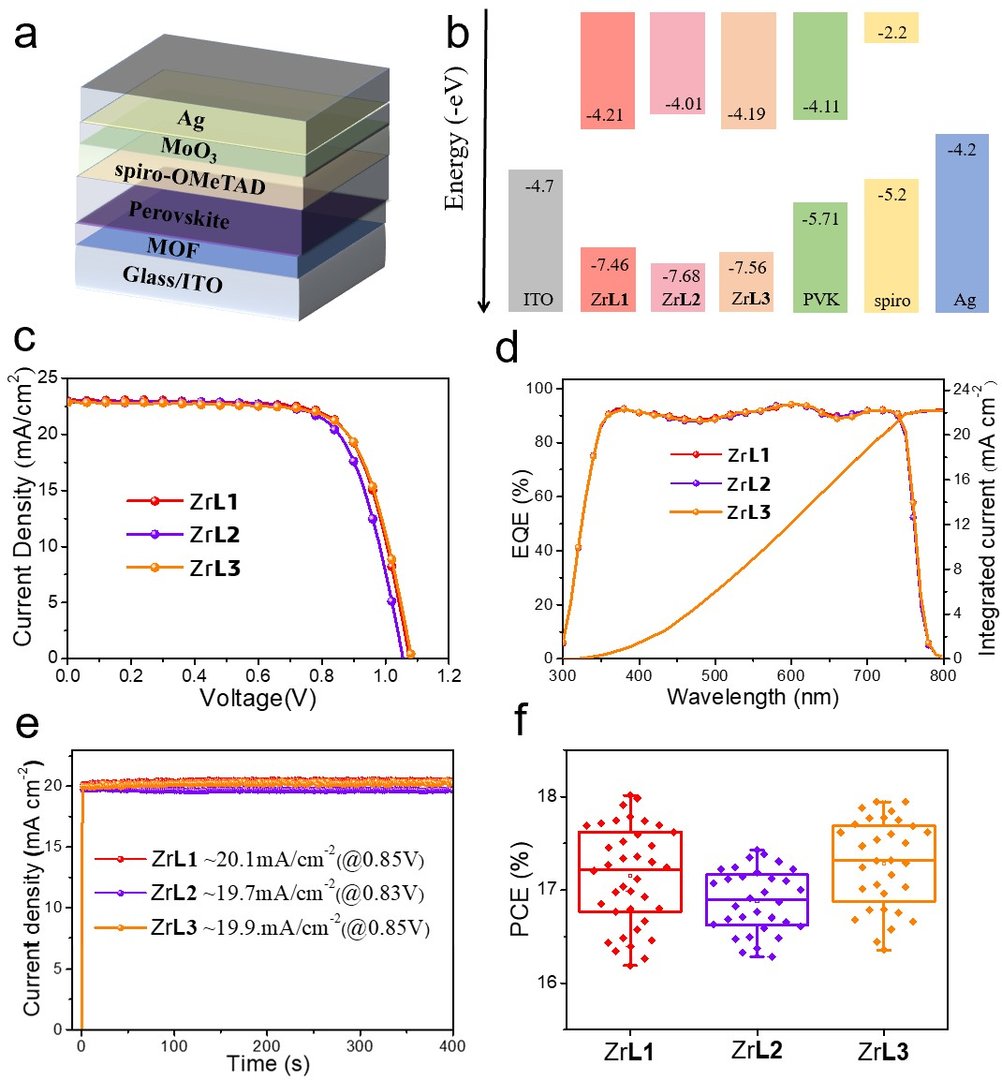
Opportunity
Perovskite solar cell (PVSC) is a thin-film device built with layers of materials to convert sunlight into electricity. Metal-organic frameworks (MOF) are materials with high potential to be incorporated into various layers of PVSC, for example electron transporting layer (ETL) to extract sunlight-generated electrons and transport electrons to other layers, to improve performance of MOF in each function layer. Application of MOF in the functional layers of PVSC has widely attracted interest, because of the great prospect for boosting photovoltaic performances, and for advancing renewable energy and sustainable development research. However, the hurdle for further development is that the MOF materials utilized are mostly lack of chemical modifications. Therefore, tailor-design MOF can better match with function layers, components and device architectures in PVSC in order to reach the full potentials.
Technology
The present invention relates to a facile chemical synthesis of modified metal-organic frameworks (MOF). Firstly, a number of organic moieties of MOF were prepared, which comprises thiol groups as a key functionality for electronic properties, and carboxyl groups for selective engagement with metal ions. Then, metal ion of Zirconium (Zr(IV)) was added to the organic moieties to engage with the carboxyl groups for network formation so as to achieve a series of tailored MOF derivatives.
The present invention further relates to fabrication of PVSC devices comprising the MOF of this invention as the electron transporting layer (ETL) to examine the photovoltaic properties and access the performance to convert sunlight into electricity. The solution deposited thin films of MOF as ETL can interact with the perovskite layer in the PVSC devices, yielding a promising power conversion efficiency (PCE) of 18.0%, which is the highest PCE value achieved so far among similarly configured solar cells. The structural and functional flexibility of the MOF systems is promising for pursuing better PVSC device performance in the future. The MOF material can also be applied to other optoelectronic devices to improve efficiency
Advantages
- The thiol functionalized MOF has improved solubility in organic solvents.
- Solution deposition of MOF thin films can ease the formation of ETL and fabrication of PVSC
- The thiol functionalized MOF is compatible with the perovskite film, which is one of the existing layers of PVSC, to facilitate charge extraction and minimize energy loss
- An ETL purely based on a MOF solid has high electron mobility for better charge extraction, where it is not required to employ any other layer or secondary component for achieving desired properties.
- Solar cells manufactured from the new MOF as ETL showed performance comparable to traditional perovskite solar cells.
Applications
- The MOF derivatives can be used in perovskite solar cells to improve efficiency and ease of manufacturing.
- The MOF material has the potential to be applied in other optoelectronic devices, for example photovoltaic cells (solar cells), photo-detectors, light-emitting diodes, and electrical injection lasers comprising a heterojunction.





